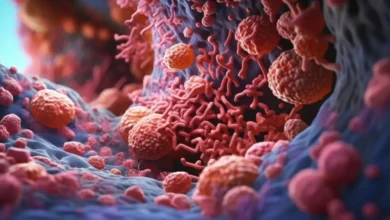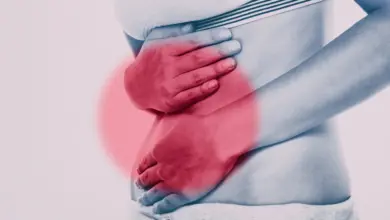L-Carnitine side effects when taken in normal recommended doses were not known for many years and many thought that there were none. Below is information from a YouTube from Mark McCarty, the Science Director for Nutriguard Research. He published his commentary by Mayo Clinic titled ‘L-Carnitine Consumption, Its Metabolism by Intestinal Micobiota, and Cardiovascular Health’. His discussed the benefits of this and also a study which tried to state the bad side effects of taking this. He discusses that the study only shows bad side effects when it is taken in much much higher doses than would be normally consumed or recommended.
L-Carnitine side effects Introduction
L-Carnitine has shown to help improve gut health for many people in many studies. Read below about these findings and research. As for L-Carnitine side effects, you can see what study you believe.
Carnitine is a physiologically essential nutritional co-factor that’s found primarily in flesh foods, especially red meats. However, fortunately for vegetarians, we make some on our own bodies, although we don’t always make as much as would be physiologically optimal.
Carnitine functions as a transporter and buffer for acetyl and fatty acetyl groups in metabolism. For example, it helps to transport fatty acids into mitochondria, where they can be burned for energy.
L-Carnitine side effects & Acetyl
Conversely, it transports acetyl groups out of mitochondria, so they can be used biosynthetically, for example, acetylcholine synthesis or histone acetylation or other purposes. Its buffering activity is also quite important because under certain circumstances, the levels of acetyl CoA or acetyl or fatty acetyl CoA build up to too high a level in tissues, and the carnitine can reduce those levels in a way that can be beneficial.

For example, if you have an ischemic tissue, a buildup of acetyl CoA in mitochondria tends to inhibit your burning of glucose for fuel, which is very inadvisable because in ischemic circumstances, glucose is the ideal fuel.
It requires a fairly little oxygen to burn. So carnitine, by bringing down the acetyl CoA level, helps your ischemic tissue burn more glucose, and that may be one reason why carnitine is useful in ischemic syndromes.
L-Carnitine side effects studies
Rather recently, a major meta -analysis by Dr. James DiNicolantonio and colleagues was published in the Mayo Clinic Proceedings, which surveyed 13 different placebo -controlled clinical trials addressing patients who previously had had a myocardial infarction, in which carnitine was used therapeutically.
And what this study showed is that the carnitine supplementation reduced significantly total mortality and also reduced risk for angina and new -way arrhythmias. In addition to this impressive result, there are a number of other studies showing that carnitine has a symptomatic benefit in intermittent claudication and in congestive heart failure.
There are also indications that in the form of astial carnitine, this nutrient is useful for slowing cognitive decline in elderly people who have either minimal cognitive dysfunction or early Alzheimer’s.
There are some studies suggesting that it can modestly improve glycemic control in diabetes. And one of the more interesting recent studies showed that it can modestly improve glycemic reports is that in people who are quite elderly and who are complaining of physical and mental fatigue, a carnitine not only alleviates that fatigue, but actually causes some significant loss of body fat and a corresponding increase in lean mass.
So there’s really quite a range of studies suggesting that this nutrient may have versatile protective potential. Now I’ve been following clinical carnitine literature for several decades, and there are a number of positive studies, some that have shown no apparent effect, but I never encountered a study which claimed the carnitine was dangerous and that L-Carnitine side effects were real.
And so that’s why I was virtually stunned when not too long ago I received an email from a friend of an essay by Gina Colada in the New York Times which contended that there was now evidence that the carnitine content of red meat was largely responsible for the adverse impact of red meat on vascular health.
This article was based on several studies done by Dr. Stanley Hazen and his colleagues at the Cleveland Clinic, and let me explain briefly what these studies showed. These indicate that if a person or an animal in just carnitine or a closely related nutritional compound called choline, that it tends to encourage the growth of gut bacteria which are capable of breaking down these nutrients to release trimethylamine.
And trimethylamine in turn can be absorbed, and in the liver it’s converted to a compound called trimethylamine in oxide, or TMAO for short. Now Hazen’s group has presented evidence that at least in some sufficiently high concentration TMAO is pro -ethrogenic.
They have shown that in an atheroma -prone strain of mouse that feeding high levels of TMO encourages atherosclerosis. More troubling than that, they’ve shown that a very high intake of carnitine in this mouse strain likewise has a pro -ethrogenic effect.
And most recently in the New England… And then journaling presented evidence from an epidemiological study in which they looked at baseline TMAO levels in a number of individuals and followed them for three years.
And what they found is in the top quartile of TMAO, as compared to the bottom quartile, risk for cardiovascular events was about two and a half times as high over the three -year follow -up period. So that, in a space that seems like a pretty difficult indictment of carnitine.
The only thing I knew about trimethylamine is that that’s what makes fish stink when fish rot. And so I went to PubMed and I typed in trimethylamine and I typed in fish. And I was pretty surprised within several minutes I found evidence that fish are rich not in trimethylamine, but in TMAO.
As a matter of fact, the The average TMAO content of a pound of fish is about 1 .7 grams. In comparison, red meat has at most 350 milligrams of carnitine per pound, some modest proportion of which conceivably would be converted to TMAO in the body.
So what this means is, if you ingest comparable amounts of fish and beef, you will get at least 10 times the TMAO exposure from fish. And yet, fish is known as the heart -healthy food. The epidemiology suggests that it’s beneficial to health.
So two things follow from this. One is that it suggests that ambient levels of TMAO in humans are not likely to have a profound negative impact in vascular health because heart -healthy fish provides the greatest exposure you can get, and yet it’s still consistent with protection.
The other implication of this is that the notion that TMAO is the reason why carnitine and TMAO is the reason why red meat is a toxic to the vascular system is evidently ridiculous because heart -healthy fish gives you a much larger exposure.

L-Carnitine side effects & evidence
What about some of the other evidence they present? What about the studies, the study they did with carnitine and atherogenesis? I searched the literature on that, and I was able to find two previous studies, which had been conducted in rabbits, which had found that supplemental carnitine was highly protective.
What might account for this? Well, when I looked at the protocol of the Hazen Group study with carnitine, I found they were using 1 .3 percent carnitine in water. So all the time, the mice were drinking water with this much carnitine in it.
If a human were to drink carnitine at that concentration two liters per day, that would correspond to 26 grams of carnitine a day. The clinical dose of carnitine is somewhere in the range of 2 to 4 grams per day, and the amount that one would get from ordinary diets is an order of magnitude lower than that.
So, whereas in comparison, the two rabbit studies that had shown positive effects of carnitine on the atherogenic process were using doses which were much closer to the clinical range when extrapolated appropriately.
So, I think a reasonable explanation of this paradox is that optimal levels of carnitine per se in your body do in fact protect from atherosclerosis, but if you take totally humongous doses of a carnitine such that you greatly overproduce TMAO, the production of TMAO may offset much of the benefit of the carnitine per se.
So, it’s possible that all of those studies are correct. Now, what about the epidemiological data that they have presented on carnitine? Well, if you look at the… mice that they induced atherosclerosis in with TMAO.
Their TMAO concentrations are in the range of about 150 micromolar, whereas the average level in humans is a little above 3 micromolar, and in the top quartile that experienced the increased risk, it was a little bit over 6.
In other words, the levels that were clearly atherogenic in the mice were at least an order magnitude higher than humans would experience under ordinary circumstances. So I think it’s quite possible that under these circumstances, TMAO in humans is not actually a mediator of risk, but rather a marker of risk, and I think one possible explanation for the increased risk in the subjects with high TMAO is that the TMAO was serving as a marker for high intake of animal products, because, and conversely, the first quartile, which had low risk, those individuals would probably be eating primarily a plant -based diet, and we know that that tends to be associated with reduced risk for coronary disease.
Want to read more about gut health? Read: Why Sugar Is Bad For Gut Health
It’s possible that TMAO will have some utility as a marker, but I think that will be confounded in societies or in individuals who eat a lot of fish. I doubt that it will even be very useful as a marker under those circumstances.
L-Carnitine side effects summary
Based on what I know, don’t fear carnitine. There’s no really good reason to believe that in the standard clinical supplementation range of 2 to 4 grams, let alone the amount one might get from natural foods, that it’s going to be a real risk.
However, don’t take 26 grams of carnitine a day. I’m not sure that anybody has ever thought to do that, but there may be a level of intake which is not safe. As far as TMAO goes, that it’s not likely to be a really significant mediator of risk at ambient levels.
Whether it is a useful marker will be, presumably will be shown in future. research, but given the fact that fish consumption will likely confound the findings, I think it will be limited in that regard as well.



